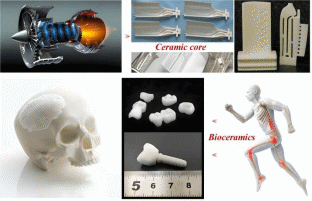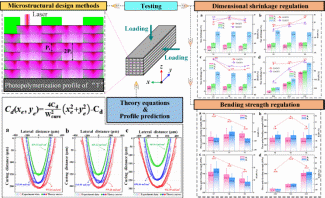
Regulation Mechanism of Anisotropic Behavior in Ceramic Additive Manufacturing and Its Applications in Ceramic Cores and Bioceramics (Image by the research group)

Methods and Benefits of Anisotropy Regulation in Ceramic Additive Manufacturing Based on Microstructure Design (Image by the research group)
Controlling directional shrinkage, flexural strength, and crack resistance during ceramic 3D printing remains critical challenges in ceramic core and bioceramic research. These properties are predominantly governed by the internal lamellar structure of materials. Achieving uniform performance across all directions would significantly enhance dimensional accuracy of complex components after debinding and sintering. Resolving directional property inconsistencies is essential for meeting precision and strength requirements in ceramic additive manufacturing.
Recently, researchers from the Shenyang Institute of Automation (SIA), Chinese Academy of Sciences(CAS), engineered micron-scale hollow rectangular structures to transform lamellar layers into interlocked "T"-shaped configurations. This redesign improves the section modulus of bending, thereby regulating anisotropic behavior. Based on theoretical equations for cure depth, the team established a novel photopolymerization contour model to accurately predict actual curing profiles and guide microstructure design. This provides a universal methodology for controlling dimensions and mechanical properties in vat photopolymerization-based ceramic additive manufacturing.
Building on theoretical cure depth equations, the research team developed a novel photopolymerization contour model to accurately predict actual curing profiles and guide microstructure design. Furthermore, they systematically examined the impact of geometric microstructural parameters and sintering temperature on dimensional shrinkage, flexural strength, and fracture toughness.
Experimental results demonstrate that the optimized microstructure design significantly enhances shrinkage control, flexural strength, and crack resistance – enabling effective regulation of ceramic dimensional stability and mechanical performance.
Published in the journal Additive Manufacturing under the title Designing curing layer structures to manage the anisotropies of alumina ceramics manufactured by vat photopolymerization, this study features SIA Ph.D. candidate Xuehua Yu as first author, and Jibin Zhao and Yuhui Zhao, reseachers from SIA as corresponding authors. The work was supported by the National Natural Science Foundation of China and the Youth Innovation Promotion Association of CAS.
Link to paper: https://doi.org/10.1016/j.addma.2025.104763